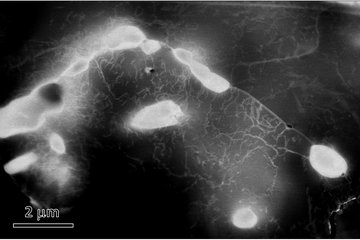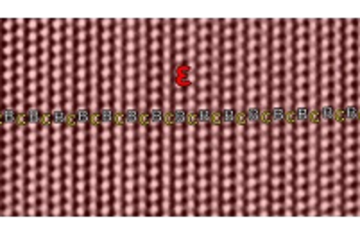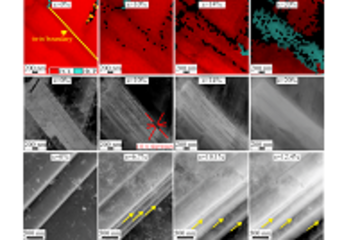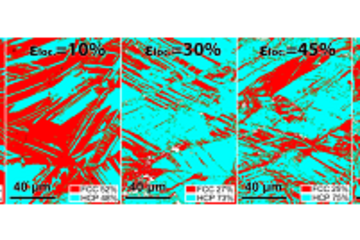All genres
341.
Talk
Nanostructured photocatalyst based on transition metal oxides. Seminar at National University of Singapore, Dept. of Materials Science and Engineering, Singapore, Singapore (2018)
342.
Talk
Insights in interfaces by combining Cs corrected STEM and APT experiments with atomistic simulations. Seminar at the University of Sydney, Faculty of Engineering & Information Technologies, Sydney, Australia (2018)
343.
Talk
Unraveling the secrets of interfaces and grain boundaries. Seminar at University of New South Wales, School of Materials Science and Engineering, Sydney, Australia (2018)
344.
Talk
Transmission electron microscopy study of carbon/metal oxide hybrid materials for Energy Storage Application. 19th International Microscopy Congress IMC19, Sydney, Australia (2018)
345.
Talk
Electron beam induced crystallization of co-sputtered amorphous high entropy alloy nanoparticles in ionic liquid. International Microscopy Congress, Sydney, Australia (2018)
346.
Talk
Degradation analysis of electrocatalyst using identical location STEM measurements. 3rd Sino-German Symposium on Advanced Electron Microscopy of Interface Structures and Properties of Materials, Tsinghua University, Beijing, China (2018)
347.
Talk
Insights in the structure and composition of nanoparticles for energy applications. Advanced Structural and Functional Materials, Krakow, Poland (2018)
348.
Talk
Influence of microstructure of Ag16.7Sb30Te53.3 bulk thermoelectric on their performance. 37th | 16th International and European Conference on Thermoelectrics, Caen, France (2018)
349.
Talk
Tuning the properties of TiO2 nanowires by heat treatment in various atmospheres. Thermec’2018 – International conference on processing and manufacturing of advanced materials, Paris, France (2018)
350.
Talk
Advancing Alloys by Segregation Engineering. 18th International Conference on the Strength of Materials (ICSMA18), Ohio State University, Columbus, OH, USA (2018)
351.
Talk
Electron Energy-Loss Spectroscopy in a Scanning Transmission Electron Microscope Fundamentals and Applications. Talk at New Technology Research Centre, University of West Bohemia, Pilsen, Czech Republic (2018)
352.
Talk
From Seeing Atoms Toward Understanding Atoms: Methods, Results and Challenges of Advanced Atom Probe Tomography. Hausdorff Lecture, Hausdorff Center for Mathematics, University of Bonn, Bonn, Germany (2018)
353.
Talk
Combining ultimate resolution: Cs corrected STEM and 3D atom probe tomography. Grand Opening of UC Irvine Materials Research Institute (IMRI) & the First International Symposium on Advanced Microscopy and Spectroscopy, University of California, Irvine, CA, USA (2018)
354.
Talk
Photocatalysts, cocatalysts, and a case study on their structural design. 1st International Meeting on Alternative & Green Energies, Mohammedia, Morocco (2018)
355.
Talk
Influence of microstructure of Ag16.7Sb30Te53.3 bulk thermoelectric on their performance. 1st International Meeting on Alternative & Green Energies (1st IMAGE'18), Mohammedia, Morocco (2018)
356.
Talk
Defects in AgSbTe2 thermoelectrics. 3 Phase, Interface, Component Systems (PICS), Centre Interdisciplinaire de Nanoscience de Marseille (CINaM), Marseille, France (2018)
357.
Talk
Advanced transmission electron microscopy of Mo2BC coatings. 63. Metallkunde-Kolloquium, Lech am Arlberg, Austria (2018)
358.
Talk
Stability of a novel Pt/Ru catalyst for polymer electrolyte membrane fuel cells. 64. Metallkunde-Kolloquium, Lech am Arlberg, Austria (2018)
359.
Talk
Chemo-Mechanics in Metallic Alloys. 16th Edition of the European Mechanics of Material Conference, Nantes, France (2018)
360.
Talk
Mo2BC thin films - a material system combining hardness and ductility? 5th European Conference in Nanofilms ECNF2018, Cranfield, UK (2018)











